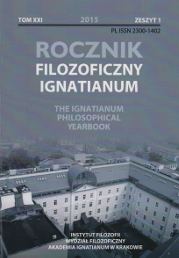The Meaning of Solidarity: Overcoming the Structures of Sin Together. The Relevance Today of the Social Teaching of John Paul II
Abstract
Taking the example of the encyclical letter “Sollicitudo rei socialis”, the author demonstrates the ongoing relevance of the social teaching of the Pope John Paul II. First the multifaceted gap between sub-Saharan Africa and the most affluent countries of the world, which stands even wider now than it was in 1987, is noted. Then the Pope's reflections on the causes of these global differences --- especially his notion of “the structures of sin” --- are elaborated with reference to consumption patterns in rich countries, power structures in poor countries, and global institutions. Finally, and in the light of this, it emerges that a transformation of people’s hearts and of institutions --- one taking as its model the principle of solidarity --- is ever more urgently needed.References
Berthold N and Brunner A (2011), "Wie ungleich ist die Welt? Eine empirische Analyse", Perspektiven der Wirtschaftspolitik. (12(4)), pp. 372-396.
Eichinger W (1988), "„Strukturen der Sünde“. Zur theologischen Argumentation von „Sollicitudo rei socialis“", In Die gesellschaftliche Verantwortung der Kirche. Zur Enzyklika Sollicitude rei socialis. Düsseldorf , pp. 117-136. Patmos.
Johannes Paul II (1987), "Sollicitudo rei socialis" Rome
Johannes XXIII (1963), "Pacem in terris" Rome
(1986), "Economic Justice for All: Pastoral Letter on Catholic Social Teaching and the U.S. Economy" Washington
(1975), "Gaudium et spes: Pastorale Konstitution über die Kirche in der Welt von heute" Rome
The Yearbook only accepts materials for publication that are free of all conflicts of interest, and that in no way involve conflicts over authorship, copyright, etc. The Editors will take action against any cases of plagiarizing, ghostwriting1, guest/honorary authorship2, etc. Where co-authored work is concerned, the Author listed first is expected to take responsibility for the submission, and is required to make clear the contributions of all of the Co-Authors involved. In the event of the publication owing its existence to funding dedicated to this purpose, this fact should be made clear: e.g. in any note of thanks/acknowledgement, or in a footnote, etc. Explicit notification should be given of any form of reprinting, with the appropriate evidence of permission to publish being furnished as required. Any impropriety on the part of Authors/Reviewers risks exposing them to appropriate responses from the relevant institutions.
______
1 This term refers to instances of a person who has made an essential contribution being omitted from the list of authors, or from notes conveying gratitude and/or acknowledgement.
2 This occurs when a person who has made either an insignificant contribution or no contribution at all nevertheless appears on the list of authors.





